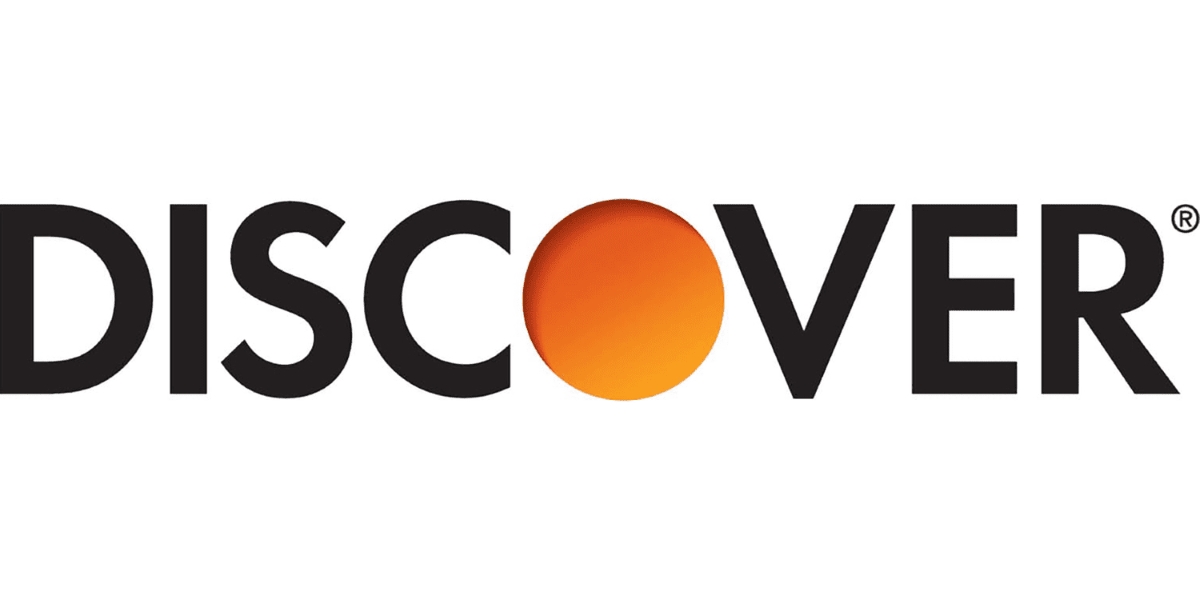

Finance
How To Find Out How Much Student Loans I Owe
Published: January 19, 2024
Discover how to calculate the total amount of student loans you owe with our helpful finance guide. Take control of your finances today!
(Many of the links in this article redirect to a specific reviewed product. Your purchase of these products through affiliate links helps to generate commission for LiveWell, at no extra cost. Learn more)
Table of Contents
- Introduction
- Gathering Information
- Contacting Loan Providers
- Checking Online Accounts
- Reviewing Loan Statements
- Utilizing the National Student Loan Data System
- Understanding Loan Servicers
- Calculating Total Loan Amounts
- Considering Interest Rates
- Exploring Repayment Options
- Seeking Help from a Student Loan Counselor
- Conclusion
Introduction
Student loans have become a common means for individuals to finance their higher education. These loans, while providing the opportunity to pursue academic goals, often come with the responsibility of repayment. However, keeping track of the amount you owe and managing your student loans can be challenging, especially if you have multiple loans or are unsure of where to begin.
In this article, we will guide you through the process of finding out how much student loan debt you owe. By following these steps, you will gain a clear understanding of your outstanding loan balance and be better equipped to make informed financial decisions.
Gathering information and contacting your loan providers are the initial steps in determining the amount of student loans you owe. This will involve reaching out to any organizations or lenders that have provided you with educational loans. You may need to gather loan documents, account information, and personal identification to facilitate the process.
Checking online accounts can be another useful way to access your loan information. Many lenders and loan servicers offer online portals that allow borrowers to view their current loan balances, payment history, and other important details. Logging into these accounts can give you a comprehensive overview of your outstanding loan amount.
Reviewing loan statements is essential for ensuring accuracy and understanding the details of your student loans. Loan statements will typically provide information on the outstanding loan balance, interest rates, repayment terms, and payment due dates. Analyzing these statements will help you get a clearer picture of your loan balance.
Utilizing the National Student Loan Data System (NSLDS) is another valuable resource for finding out how much student loan debt you owe. NSLDS is a government database that provides information on federal loans, including details such as loan amounts, interest rates, and servicer information. Access to this database can help you determine your federal loan balance.
Gathering Information
Before you can determine how much student loan debt you owe, it’s important to gather all the necessary information. This will involve reaching out to your loan providers, checking online accounts, reviewing loan statements, and utilizing the National Student Loan Data System (NSLDS).
Start by contacting your loan providers directly. These could be banks, credit unions, or even the U.S. Department of Education for federal loans. Get in touch with their customer service departments and provide them with your personal information, such as your full name, Social Security number, and any other information they may require. They will be able to give you the details about your outstanding loan balance, interest rates, and repayment terms.
Many loan providers also offer online account management tools. These portals allow borrowers to easily access and manage their loans. Log in to your online accounts and navigate to the sections that provide information on your loan balance and repayment status. Take note of any important details you come across.
In addition to contacting your loan providers, it’s crucial to examine your loan statements. These statements are typically sent to you regularly and provide a breakdown of your loan balance, payments made, and any accrued interest. Carefully review each statement and make note of the outstanding balance on each loan.
The National Student Loan Data System (NSLDS) is a central database maintained by the U.S. Department of Education. It provides comprehensive information on federal student loans, including loan amounts, disbursed dates, outstanding balances, and loan servicer contact information. Visit the NSLDS website and log in using your FSA ID to access your loan information.
By gathering all this information, you will have a clearer understanding of your student loan debt. Make sure to keep track of the details you obtain from each source and organize them in a way that is easily accessible for future reference.
Contacting Loan Providers
Contacting your loan providers directly is a crucial step in finding out how much student loan debt you owe. Whether you have federal or private loans, reaching out to the lender or servicer will provide you with the most accurate and up-to-date information regarding your loans.
To get started, gather the necessary contact information for your loan providers. This may include their phone numbers, email addresses, and mailing addresses. You can usually find this information on your loan documents or on the lender’s website. If you are unsure about who your loan provider is, the National Student Loan Data System (NSLDS) can provide you with the contact information for your federal loans.
When contacting your loan providers, be prepared to provide them with your personal information, such as your full name, Social Security number, and loan account numbers. This will help expedite the process and ensure that the information you receive is specific to your loans.
If you have federal loans, you can contact the loan servicer assigned to your loans. The servicer is responsible for managing the billing and repayment of your federal student loans. They can provide you with details about your loan balances, interest rates, repayment options, and any other related inquiries you may have.
If you have private loans, reach out to the lender directly. Private loan lenders are the entities that provided you with the financing for your education. They can inform you about your loan balance, interest rates, repayment terms, and any other important details specific to your private loans.
During your communication with loan providers, consider asking about any benefits or assistance programs that may be available to you. For federal loans, there may be options such as income-driven repayment plans, loan forgiveness programs, or loan consolidation. Private lenders may also have assistance programs or repayment options that could help make your student loan payments more manageable.
Remember to keep a record of all your communication with loan providers, including dates, names of representatives you speak with, and any reference numbers provided. This will be useful in case you need to refer back to the information discussed during your conversations.
Overall, contacting your loan providers directly is an essential step in understanding and managing your student loan debt. It will provide you with accurate and personalized information that will help you make informed decisions regarding your repayment strategy.
Checking Online Accounts
One of the easiest and most convenient ways to find out how much student loan debt you owe is by checking your online accounts. Many loan providers and loan servicers offer online portals that allow borrowers to access their loan information securely and conveniently.
Start by visiting the website of your loan provider or loan servicer. Look for a login or account access section on the site. You may need to create an account if you haven’t done so already. Typically, you will be required to provide your personal information, such as your Social Security number and loan account number, to set up your online account.
Once you have logged in to your online account, navigate to the section that provides information on your loan balance. This may be labeled as “Loan Summary,” “Account Overview,” or something similar. Here, you will be able to see the outstanding balance on your loan, any accrued interest, and potentially other details such as your repayment status, next payment due date, and payment history.
Take the time to review all the information provided in your online account. This includes checking that your personal details are correct, ensuring that the loan amounts and interest rates align with what you expect, and familiarizing yourself with any repayment options or benefits that may be available to you.
In addition to accessing individual loan accounts, you may also have the option to view consolidated loan information if you have multiple loans with the same loan servicer. This can be particularly helpful if you want to gain a comprehensive understanding of your overall loan balance.
Checking online accounts regularly can also help you stay on top of your student loan repayment. You can set up automatic payments or make manual payments directly through the online portal, ensuring that you never miss a due date and potentially reducing the amount of interest that accrues on your loans.
It’s important to note that not all loan providers or loan servicers offer online account access. If you are unable to find an online portal for your loans, don’t worry. There are other methods, such as contacting your loan providers directly or utilizing the National Student Loan Data System (NSLDS), which we’ll discuss in the next section, that can help you obtain your loan information.
Overall, checking your online accounts provides a convenient and efficient way to stay informed about the details of your student loans. By regularly reviewing your loan balance and repayment status, you can make informed financial decisions and manage your student loan debt more effectively.
Reviewing Loan Statements
Another important step in finding out how much student loan debt you owe is to review your loan statements. Loan statements are typically sent to you periodically by your loan providers or loan servicers. They contain detailed information about your loan balance, interest rates, repayment terms, and payment history.
Loan statements provide you with a comprehensive breakdown of your student loan debt. They typically include the outstanding balance on your loan, the interest rate charged, the minimum monthly payment, and any fees or charges that may have been assessed.
Start by gathering all your loan statements in one place. You may have received them by mail or electronically, depending on your communication preferences. If you have trouble finding your loan statements, reach out to your loan provider or loan servicer to request copies.
Once you have your loan statements, take the time to carefully review each one. Pay attention to the following details:
- The outstanding balance: This is the amount that you currently owe on your loan. It may differ from the original loan amount due to payments made or accrued interest.
- Interest rates: Note the interest rate applied to each loan. This information is crucial for understanding how interest is accumulating on your debt.
- Repayment terms: Review the terms of your loan, including the length of the repayment period and any specific conditions or requirements.
- Payment history: Look at the record of your past payments. This will help you verify that your payments have been credited accurately and ensure that you are on track with your loan repayment.
It’s important to keep in mind that loan statements may not be easily understood by everyone. If you come across any terms or sections that you are unsure about, don’t hesitate to reach out to your loan provider or loan servicer for clarification. They can explain any confusing details and help you better understand the information presented in the statements.
By reviewing your loan statements, you can gain a clear picture of your loan balances and understand the progress you are making with repayment. It’s also an opportunity to spot any errors or discrepancies that may have occurred. If you notice any discrepancies, contact your loan provider or loan servicer immediately to address the issue.
Keeping a file or folder to organize your loan statements can be helpful for future reference. By maintaining a record of all your loan statements, you can track your progress, monitor changes, and ensure that you stay informed about your student loan debt.
Utilizing the National Student Loan Data System
The National Student Loan Data System (NSLDS) is a valuable resource for students and borrowers who are trying to find out how much student loan debt they owe. It is a centralized database maintained by the U.S. Department of Education that provides information on federal student loans.
To utilize the NSLDS, you need to visit their website and log in using your FSA ID. If you don’t have an FSA ID, you can create one on the Federal Student Aid website. This unique identifier ensures the security and confidentiality of your personal information.
Once you are logged in, you will have access to a wealth of information about your federal loans. This includes details such as your outstanding loan balance, loan types, interest rates, disbursement dates, and the names of your loan servicers. You can also find information about any grants or scholarships you may have received.
The NSLDS allows you to get a comprehensive overview of all your federal student loans in one place. This is especially useful if you have taken out loans from multiple sources, as it consolidates the information into a single interface.
One of the key benefits of using the NSLDS is that it provides a centralized view of your federal loan repayment options. You can explore various repayment plans, such as income-driven plans that tailor the monthly payments based on your income and family size. The NSLDS can help you understand your eligibility for different repayment plans and the potential impact on your loan repayment.
In addition to loan balance information, the NSLDS can also provide you with the contact information for your loan servicers. Loan servicers are responsible for managing the repayment of your federal student loans, processing payments, and addressing any borrower inquiries. Having this contact information readily available can be helpful if you have questions or need assistance with your loans.
It’s important to note that the NSLDS only provides information about federal student loans. If you have private loans, you will need to contact your loan providers directly for the details of those loans.
By utilizing the NSLDS, you can have a comprehensive overview of your federal student loan debt. It allows you to access your loan information, explore repayment options, and stay informed about your loan servicers. Utilizing this resource can help you make informed financial decisions and effectively manage your student loan debt.
Understanding Loan Servicers
Loan servicers play a crucial role in managing your student loans. They act as the intermediary between you and your loan provider, handling tasks such as collecting payments, assisting with repayment plans, and providing borrower support. Understanding the role of loan servicers is essential when it comes to finding out how much student loan debt you owe.
When you took out your student loans, you were likely assigned a loan servicer by your loan provider or the U.S. Department of Education for federal loans. Loan servicers are responsible for:
- Processing and applying your loan payments
- Maintaining your loan account information
- Managing your loan repayment and repayment plans
- Providing assistance and answering your questions about your loans
- Keeping you informed about changes to your loan terms and conditions
To find out your loan servicer, you can:
- Check your loan statements: Your loan statements may include the contact information for your loan servicer.
- Log in to your online account: If you have an online account with your loan provider or loan servicer, you can often find the loan servicer’s contact information there.
- Access the National Student Loan Data System (NSLDS): The NSLDS provides information on federal student loans, including the loan servicer’s contact information.
- Contact your loan provider: If you are unsure about your loan servicer, reach out to your loan provider directly and ask for the loan servicer’s details.
Understanding your loan servicer is important because they are the primary point of contact for any questions or concerns you may have regarding your student loans. They can provide you with information about your outstanding loan balance, any accrued interest, and repayment options that may be available to you.
Loan servicers also play a crucial role in helping you navigate the repayment process. They can assist you in selecting the best repayment plan based on your financial situation and provide guidance on options such as deferment, forbearance, or loan forgiveness programs.
It’s important to note that loan servicers work on behalf of your loan provider or the U.S. Department of Education. If you have multiple loans, you may have different loan servicers for each loan. It’s essential to keep track of the contact information for each loan servicer so that you can reach out to the correct party when needed.
Having a clear understanding of your loan servicer and maintaining open lines of communication with them is fundamental in managing your student loan debt effectively. By building a relationship with your loan servicer, you can access the information and support you need to stay on track with your loan repayment.
Calculating Total Loan Amounts
Calculating the total amount of your student loans is an essential step in understanding how much student loan debt you owe. This involves determining the combined balance of all your outstanding loans, including both federal and private loans.
To calculate your total loan amounts, follow these steps:
- Gather all your loan documents: Collect any loan documents and statements you have received from your loan providers or loan servicers. This includes both physical copies and digital files.
- Make a list of your loans: Create a comprehensive list of all your student loans, including the lender’s name, loan type (federal or private), outstanding balance, and interest rate. Include both current loans and any loans that may be in deferment or forbearance.
- Add up the loan balances: Total up the outstanding balances of all your loans to get an overall estimate of your total loan amount. This will give you a clear picture of the total debt you owe.
In addition to calculating the total loan amounts, it can be helpful to break down your loans by type. This allows you to see the proportion of your debt that is attributable to federal loans versus private loans.
It’s important to note that calculating your total loan amounts is just the starting point. To fully understand your student loan debt, you should also consider the interest rates associated with each loan. Higher interest rates can significantly impact the overall cost of your student loans.
By calculating your total loan amounts, you gain a clearer understanding of your overall student loan debt. This information is vital for budgeting, financial planning, and developing a repayment strategy. It can also help you assess whether you need to consider options such as loan consolidation or refinancing to manage your debt more effectively.
If you find that your loan amounts are higher than anticipated or are struggling to manage your monthly payments, it may be beneficial to seek student loan counseling or explore repayment options that can help you better manage your debt burden.
Remember, knowing the total loan amounts is just the beginning of your student loan journey. By understanding your debt and taking proactive steps, you can work towards financial stability and successfully navigate the path to paying off your student loans.
Considering Interest Rates
When it comes to student loans, interest rates play a crucial role in determining the overall cost of your loans. It is essential to consider the interest rates associated with your loans when assessing how much student loan debt you owe and formulating a plan for repayment.
The interest rate is the percentage of the loan amount that you are charged for borrowing the funds. It is essentially the cost you pay for the privilege of using the lender’s money. The higher the interest rate, the more you will end up paying over the life of your loan.
When calculating the impact of interest rates on your student loan debt, consider the following factors:
- Loan types: Federal student loans generally have fixed interest rates set by the government. Private student loans, on the other hand, may have fixed or variable interest rates that are determined by the lender or financial institution.
- Interest capitalization: Depending on the terms of your loans, interest may accrue and capitalize over time. This means that unpaid interest is added to the principal balance of your loan, increasing the total amount you owe. Understanding when and how interest capitalizes is crucial for estimating the total cost of your loan.
- Comparing rates: If you have both federal and private student loans, compare the interest rates associated with each. Federal loans generally have lower interest rates compared to private loans. Evaluating the differences can help you prioritize repayment and determine which loans to pay off first.
- Repayment timeline: The length of your loan repayment term can also impact the total interest paid. Longer repayment terms may result in lower monthly payments but can result in paying more interest over time. Shorter repayment terms generally lead to higher monthly payments but can save you money on interest in the long run.
Understanding the impact of interest rates on your student loan debt is crucial for effective financial planning. A higher interest rate can significantly increase the overall cost of your loans, making it important to consider it when creating a budget and repayment strategy.
If you have loans with high-interest rates, you may want to explore options for reducing the interest charges. This can include refinancing your loans to a lower interest rate or considering payment strategies that prioritize paying off higher-interest loans first.
Additionally, staying up-to-date with your loan payments and avoiding delinquency or default can minimize the impact of interest. Late payments or missed payments can result in additional fees and interest charges, making it even more challenging to pay off your student loans.
In summary, carefully consider the interest rates associated with your student loans when assessing your overall debt. Evaluate the differences between federal and private loans, understand how interest capitalizes, and explore options for reducing interest charges. By considering interest rates, you can make informed decisions to help you effectively manage and pay off your student loan debt.
Exploring Repayment Options
When it comes to student loan debt, exploring different repayment options is crucial. Understanding and selecting the right repayment plan can help you manage your loans effectively and make progress towards paying off your student loan debt.
Here are some common repayment options to consider:
Standard Repayment Plan:
This is the default repayment plan for most federal loans. It divides your loan balance into equal monthly payments over a fixed period, usually 10 years. The monthly payments will remain the same throughout the repayment term. Consider this plan if you can comfortably afford the monthly payments and want to pay off your loans as quickly as possible.
Graduated Repayment Plan:
This plan starts with lower monthly payments that gradually increase over time. It is designed for borrowers who expect their incomes to increase over the years. It allows you to make smaller payments initially and gradually adjust to higher payments as your income grows.
Income-Driven Repayment Plans:
Income-Driven Repayment (IDR) plans are available for borrowers with federal loans. They calculate your monthly payment based on a percentage of your discretionary income. There are several IDR plans, including Income-Based Repayment (IBR), Pay As You Earn (PAYE), Revised Pay As You Earn (REPAYE), and Income-Contingent Repayment (ICR). These plans cap your monthly payments and offer loan forgiveness after a certain period, typically 20 or 25 years of qualifying payments.
Extended Repayment Plan:
This plan allows you to extend your repayment term beyond the standard 10-year period, reducing your monthly payments. Extended plans can stretch repayment to 25 or 30 years depending on the loan balance. Keep in mind that extending the repayment term can result in paying more interest over time.
Loan Consolidation:
If you have multiple federal loans, loan consolidation allows you to combine them into a single loan with a fixed interest rate. This simplifies the repayment process by having only one monthly payment. However, it’s important to note that consolidation may not always result in a lower interest rate or lower monthly payment.
It’s crucial to explore and compare the various repayment options available to you. Consider your current financial situation, income projections, and long-term goals when selecting a plan. Each repayment option has its own advantages and considerations, so choose one that aligns with your individual circumstances.
If you’re unsure about which repayment plan is best for you, consider reaching out to your loan servicer or a student loan counselor. They can provide guidance and help you understand the details and potential benefits of each repayment plan.
Remember that you can change your repayment plan in the future if your financial circumstances change. It’s important to regularly evaluate your situation and adjust your repayment strategy accordingly.
By exploring and selecting the right repayment option, you can effectively manage your student loan debt and work towards becoming debt-free. Take the time to understand the available options and choose a plan that suits your financial goals and priorities.
Seeking Help from a Student Loan Counselor
Managing student loan debt can be complex and overwhelming at times. If you find yourself struggling to navigate the repayment process or need guidance on your student loans, seeking help from a student loan counselor can be a valuable resource.
Student loan counselors are professionals who specialize in providing guidance and support to borrowers like you. They have in-depth knowledge and expertise in student loans, repayment options, and strategies for managing debt. Seeking their assistance can help you understand your options and make informed decisions about your student loans.
Here are a few reasons why you might consider seeking help from a student loan counselor:
Expert Advice:
Student loan counselors are well-versed in the complexities of student loan programs, repayment options, and forgiveness programs. They can provide personalized advice and help you understand the best course of action based on your unique financial situation and goals.
Repayment Plans:
A student loan counselor can evaluate your current financial circumstances and help you explore different repayment plans that are tailored to your needs. They can explain the pros and cons of each plan and assist you in selecting the most suitable option for managing your student loan debt.
Loan Forgiveness Programs:
If you work in certain public service or nonprofit sectors, you may be eligible for loan forgiveness programs. A student loan counselor can guide you through the requirements and application process for these programs, helping you take advantage of potential opportunities for loan forgiveness.
Troubleshooting Issues:
If you encounter problems with your loans or have concerns about your repayment, a student loan counselor can advocate on your behalf and help resolve any issues. They can assist with communication between you and your loan servicers, ensuring that your concerns are addressed promptly and accurately.
Budgeting and Financial Planning:
Student loan counselors can review your financial situation holistically and help you develop a budgeting and financial plan that accommodates your student loan repayment. They can provide strategies for managing other financial obligations while making progress towards paying off your student loans.
Confidential Support:
Dealing with student loan debt can be stressful, and it can sometimes feel like you’re navigating through it alone. A student loan counselor can offer a supportive and non-judgmental environment to discuss your concerns and fears about your student loans.
Whether you have questions about loan repayment, need assistance with loan forgiveness programs, or simply want guidance on managing your student loan debt, a student loan counselor can provide the expertise and support you need to navigate the complexities of student loans.
To find a student loan counselor, you can reach out to your loan servicer, visit the Federal Student Aid website, or contact a nonprofit credit counseling agency that offers student loan counseling services.
Remember, seeking help from a student loan counselor is a proactive step towards understanding your options and taking control of your student loan debt. Don’t hesitate to reach out and utilize their expertise to make informed decisions about your financial future.
Conclusion
Managing and understanding your student loan debt is crucial for your financial well-being. By following the steps outlined in this article, you can find out how much student loan debt you owe and take control of your repayment journey.
Start by gathering information from your loan providers, contacting them directly, and checking your online accounts. Review your loan statements and utilize resources like the National Student Loan Data System (NSLDS) to obtain comprehensive information about your federal loans.
It is important to consider the interest rates associated with your loans, as they significantly impact the total cost of your debt. Exploring repayment options will help you find a plan that aligns with your financial situation, allowing you to effectively manage your loans and work towards becoming debt-free.
If you find yourself overwhelmed or needing guidance, don’t hesitate to seek help from a student loan counselor. These professionals are equipped to provide expert advice, assist with repayment plans, and help troubleshoot any issues you may encounter along the way.
Remember, managing student loan debt is a journey that requires patience, diligence, and proactive steps. By understanding your loan amounts, considering your options, and seeking support when needed, you can successfully navigate the path to financial freedom.
Stay informed, stay proactive, and stay focused on your goal of repaying your student loans. With determination and the right resources, you can take control of your student loan debt and build a strong foundation for your financial future.














